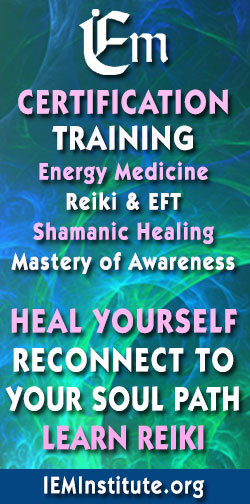By Dr. David Stewart. Reprinted from The Raindrop Messenger, a free eline newsletter.

Which is best?
• To apply oils sequentially one at a time in layers?
• Or to mix and apply them all at once as blends?
I could answer with a question: "What do you want?
• Melodies, Scales, and Arpeggios?
• Or Intervals, Harmonies, and Chords?"
However, I will give you a detailed technical and scientific answer, but first we need some background in music theory.
WHAT IS PITCH?
Essential Oils are like notes played by an instrument. The pitch is a term referring to what note we hear on the musical scale. In the western world we break an octave of pitches into 12 tones: A, A#, B, C, C#, D, D#, E, F, F#, G, & G#. Playing all twelve of these notes sequentially is the "Chromatic Scale" of Western Music. (NOTE: It will help if you read this and the following paragraphs with a piano or keyboard in front of you in order to visualize the octaves and notes to which we will be referring and to see where harmonics come from.)
An octave is a pair of pitches where the higher one is double the frequency of the lower one. In the ancient Pythagorean Scale, Middle C is a frequency of 256 cycles per second or 256 Hz (Hertz). An octave above would be a C of 512 Hz and an octave below would be a C of 128 Hz. Below that would be a deep bass C at 64 Hz--two octaves below Middle C and approaching the bottom limit of the human voice.
NOTE: We don't use the Pythagorean Scale any more in our music, but rather we use the modern "Tempered Scale" with an International Standard Pitch of A above Middle C at 440 Hz. This makes today's middle C to be 261.626 Hz. To explain the things that follow here, it is mathematically much simpler to use the middle C of Pythagorus to make our point, since 256 Hz for C is a nice integer number and we can avoid decimals. 256 is a perfect square of the number 16.
C is the pitch we hear when the appropriate key or string is played on a piano, or a violin, or a trumpet, or when sung by a human voice. But even though it is the same pitch, we can easily distinguish between a C played by a piano from one played on a violin or a trumpet or sung. In fact, if five people all sang the same pitch, we could tell one singer from another. How is that?
FUNDAMENTALS, HARMONICS, AND TIMBRE
When a specific pitch or frequency is sounded by instrument or voice, there is actually a whole spectrum of frequencies produced. We hear the lowest frequency as pitch, which is called the "fundamental." We hear all the higher pitches, too, but they don't register with our ears as tones of identifiable pitch, but as "color." We can tell the sounds of different instruments or singers from one another because they each have different "colors" to their tones. These higher vibrations are called "harmonics" or "overtones." The color rendered with the fundamental pitch by the harmonics is called "timbre," which is pronounced "tom-burr."
Because the assortment and amplitudes of the harmonics that accompany a fundamental tone are different for each source of sound, we can tell one instrument from another and one human voice from another. Thus, a bell sounds different than a clarinet, and Tom sounds different than Bruce, even when they are ALL on the same pitch.
For example, when you sound a bass C, two octaves below Middle C, on any instrument, such as a piano, there will be a low fundamental note heard as the pitch at 64 Hz, but there will also be a vibration of the next C up at 128 Hz and the C above that at 256 Hz. There will also be the Cs above that at 512 Hz and 1024 Hz. In addition, there will be vibrations of 192 Hz (the G below Middle C), as well as vibrations of 320 Hz, 384 Hz, and 448 Hz, which are E, G, and B in the octave above Middle C. On top of that there will also be vibrations at 576 Hz, 640 Hz, 768 Hz, and 960 Hz which are, respectively, the D, E, G, and B in the second octave above Middle C. There will also be vibrations of 704 Hz, 832 Hz, and 896 Hz that do not correspond to any of the twelve notes of the chromatic scale, but fall between the notes of that octave, notes that we don't use in Western music and which have no Western names.
So you can see that when you sound a low C on a piano, two octaves below Middle C, you not only hear the fundamental of 64 Hz, but you also get at least 15 other higher frequencies sounding simultaneously in more than four octaves above. The amplitudes of these harmonics are less than the amplitude of the fundamental so that the pitch is not obscured, but we do hear the whole mix of 16 or more frequencies and recognize the instrument immediately as being a piano, and not a tuba or a bassoon.
The unique, haunting and hollow sound of an oboe is because its tones have harmonics almost as loud as the fundamental. But that's enough music theory to make my point with oils.
HOW DO ESSENTIAL OILS MAKE MUSIC?
Essential oils all emit a spectrum of frequencies that come from the bonds between elements comprising the molecules of their compounds. Each molecule is like a tiny stringed instrument where the bonds between the atoms of carbon, hydrogen, and oxygen act as strings of different pitches, just as a guitar or a harp has several strings of different pitches each with harmonics and overtones of their own.
Among the numerous frequencies of the molecules in an essential oil will be a fundamental which can and has been measured for a number of essential oils. The range of fundamental frequencies that have been measured for essential oils ranges from 52 to 320 MHz. For example, Basil has been measured with a fundamental of 52 MHz, Lavender at 118 MHz, and Rose at 320 MHz. Vibrating at the same time with the fundamental frequency of an oil is also a range of harmonics. Hence, the application of an essential oil is like playing a musical note complete with a fundamental and all its overtones.
When musical notes are played in a sequence, one after the other, we get melodies, scales, and arpeggios. Hence, when we anoint with different single oils one at a time, one after the other in layers, we are playing tunes.
When we play two different musical notes together, that is called an "interval." For example most automobile horns consists of two pitches sounded together to form an interval. This interval is usually a perfect fourth or a minor third. The first two notes of the Bridal Chorus, "Here Comes the Bride" are a perfect fourth but in this instance, they occur in sequence as the opening notes of the melody. The first two notes of the theme to "Phantom of the Opera" are also a perfect fourth. The first two notes of America's National Anthem ("Star Spangled Banner") is a minor third. Beethoven's "Minuet in G" opens with a series of intervals that are all thirds.
When we play more than two notes together at the same time, that is a chord. The first three notes of Dixie, "Oh I Wish I was ...", would be a tonic chord or major triad if played together. The first three notes of the "Star Spangled Banner" also form a major triad if the notes were played simultaneously.
The original question at the start of this article is: Which is Best? Applying oils in layers one at a time in a sequence or applying several species all at once as blends or mixes. And how would you know which way to anoint yourself or another in any given instance? The short answer to the question of "Best," is that neither is best. They are just different and both ways can be the best in the appropriate circumstances.
THINK OF OILS AS NOTES WITH PITCH, TIMBRE, & VOLUME
Consider this. Think of each species of essential oil as vibrating like a musical note sounded by a particular instrument. It will have a fundamental, a basic frequency, or pitch. At the same time, since it composed of hundreds of compounds each with a spectrum of frequencies, there will hundreds of harmonics or overtones creating a timbre. Some oils are like trumpets. Some like violins. Some like flutes or bassoons. Some instruments are naturally loud while some are naturally soft.
The amount of oil applied determines its amplitude or volume. While some oils, like Oregano or Thyme, are naturally loud, can overpower other oils, and require only a little to produce the desired volume. Other oils, like Myrrh, are naturally soft and play well with others without drowning them out. Myrrh is used to accompany many ointments and perfumes without upstaging the other ingredients.
The multitude of frequencies above its fundamental within an essential oil are what gives a specific species its personality, its color, and its timbre. The spectrum of frequencies represents the many possibilities available through that particular oil, only some of which will manifest for a given application depending on the need and the desire.
A specific species of oil will produce different therapeutic effects on different people, partly because different people have different chemistries of their own that react differently with a given oil. But also we know, through quantum physics, that the determination of which possibility an oil will manifest for a certain person in a certain application is also determined by their intentions, their faith, their beliefs, and their desires. The intent of the person applying the oil is also a factor in picking out which of the many possibilities an oil will exhibit for a given healing. Of the many harmonic and overtone frequencies within an oil, and depending on the fundamental frequency, the possibilities that will manifest will be those that resonate with the intentions of the giver and the receiver of the anointing.
COMPOSING & PERFORMING MUSIC WITH OILS
How the oils are applied determines the form of music that you create, just as how notes are played or combined, from all of the pitches and timbres available, determines the nature and style of the music that results.
You can see that applying one single oil after another is like playing notes in a sequence, which can be a melody, a trill, a scale, or an arpeggio. Applying two single oils together forms a musical interval while applying a blend three or more oils is playing a chord. Applying single oils quickly, one after the other, would be a faster tempo that applying them slowly with waiting intervals in between.
Melodies are more focused, like a fine tipped pen, but with a light touch, which appeals more directly to the heart and would be more effective with maladies that are restricted to a certain area in the body. Melodic applications of oils usually imply the use of single species, one at a time or in layers.
Chords and harmonic intervals are more broad, like a wide tipped marker, with a heavier impact which appeals more directly to the brain and would be more effective with maladies that affect larger more general areas of the body. Polyphonic applications of oils imply the use of blends with mixtures of species applied all at once.
In emotional release work with essential oils, we use many single oils applied one at a time which can zero in on specific emotions lodged in specific tissues that need addressing. These are oils like oregano, cedarwood, lavender, or hyssop.
But we also apply blends during emotional releasing which address one's whole being and personality. Blends bring strength, courage, and integration to the process. Emotionally beneficial blends can be oils like Valor, Forgiveness, Harmony, Release, Transformation, Three Wise Men, Believe, Magnify Your Purpose, and Highest Potential.
In a therapeutic application for conditions that affect the whole body, or a major system of the body, we often use other blends like Thieves, RC, ImmuPower, or TraumaLife.
CONCLUSION
While the above discussion is intellectually interesting, and stimulating to the left brain, it may not be practical or helpful in the moment when making a decision on which oils to use and how for a person in need of healing right now. While intuition with oils works best when one has acquired a certain level of intellectual information and knowledge about essential oils, during moments engaged in the actual practice of healing and anointing, our left brains are usually not as useful as our right brains, and can even get in the way.
In the end, there is no substitute for an intuitive, right brain, prayerful approach to anointing with oils for healing purposes. By approaching an anointing and the laying on of your hands in faith, with an attitude of humility, in the conviction that God is your ever-present guide, you can always know which oils to apply and how to apply them. God's healing power can come through us and through the oils better, sometimes, when the left brain is temporarily suspended and stands not in the way of an uninhibited flow His energy.
Nevertheless, it is helpful to know that we do play music when we anoint ourselves or others with essential oils. The music happens whether we know it or not, with the oils singing songs in harmony to our souls. That is a fact. An assortment of oils, whether considered separately or in a blend, is an ensemble of musical instruments, like an orchestra or a band.
When we do a Raindrop on someone, we are playing melodies, intervals, and chords for about an hour, thus creating a beautiful symphony that heals and balances the body, mind and soul. Raindrop Symphonies are experienced by both the receiver and the giver, but from different places in the Concert Hall--one from a seat in the auditorium and the other on stage in a chair with the orchestra.
So the next time you apply essential oils on yourself or on others, think of it as composing and performing a rhapsody of healing music to which the body, mind, and soul can respond as you would in experiencing a fine concert.
Book by David Stewart and other reference:
The Chemistry of Essential Oils Made Easy by Dr. David Stewart
Healing Oils of the Bible by Dr. David Stewart
A Statistical Validation of the Chemistry Raindrop Technique by Dr. David Stewart
Current Essential Oil Research: 100 Recent Peer-Reviewed Articles Published 2009-2014 Volume 1 Raindrop and Bible Oils by Shawn and Tonya Peterson, PhD, MBA and Dr. David Stewart (Foreward)
Excerpt from The Frequencies of God's Voice and Those of Oils
by David Stewart, PhD
WHAT IS FREQUENCY?
Frequency is the number of times something repeats itself in a given interval of time. For example, "24 hours per day," is a frequency repeated daily. "7 days per week" is another frequency we experience over and over, 52 times a year. Our hearts also beat in a frequency which, for a normal adult at rest, ranges from 60 to 80 beats per minute. Except for the “thump, thump . . .” of your heart, none of these examples are audible frequencies, heard as pitch or notes on a musical scale.
Hz or Hertz is the scientific term for a unit of frequency and stands for “cycles per second” or “cps.” MHz, or Megahertz, means “a million times per second.” GHz, or Gigahertz, is “a billion times per second.” And THz, or Terahertz, is “a trillion times per second.” THz is the same as MMHz, or Megamegahertz. The frequences of our bodily organs and tissues range from Hz to MHz while the frequencies within the cells and molecules in our bodies and the molecules of oils range from MHz to GHz and even to THz.
WHAT IF THE FREQUENCES OF OILS WERE AUDIBLE?
Here is how you can know for certain that essential oils do not vibrate in the audible Hz range. If they did, we could hear them singing from the bottle, note them humming in our diffusers, and feel their tickling tones on our skin. When inhaled they would fill our heads with a cacophony of many sounds. Of course such sounds are not heard from oils because they do not vibrate at the frequencies within hearing range. Yet essential oils do communicate with us and our bodies, and we communicate with them, too, but not through the audible frequencies of voice and music. Rather we communicate by thoughts, intentions, and feelings, which are much higher frequencies and to which oils can respond.
For human hearing, we hear from about 15 Hz to 20,000 Hz as pitches from low to high. Vibrations less than 15 Hz are not usually heard as pitches, but as deep buzzing sounds or individual beats, like our hearts which throb a little over 1 Hz, slightly over one beat per second. The lowest note on a piano is 27.5 Hz, which is an A just below three octaves below Middle C. Officially, the frequency of Middle C is 261.626 Hz for the Tempered Scale we use today and 256 Hz for the ancient Pathagorean Scale. The highest note on a piano is a very high C, four octaves above Middle C vibrating at about 4000 Hz. I used to be a piano tuner.
Every atom and every molecule vibrates with a spectrum of frequencies in the MHz range, which is the range of radio waves, which are inaudible to humans. The human voice vibrates at KHz and below. The vibrations of the electro-magnetic bonds of individual essential oil molecules are in the THz or MMHz range, which is trillions of vibrations a second. (For more information on this, see Chapter Six in my book, "The Chemistry of Essential Oils Made Simple.")
Essential oils are composed of hundreds of compounds, each with its molecular spectrum of frequencies. When all added together, the oil, as a whole, will manifest a fundamental frequency which will be in the MHz range. There will also be a series of harmonics in the oil that reach up into the GHz range and above.
More on Frequencies
The study that — for better or worse — got everyone talking about essential oil frequencies
In 1992, studies conducted by Bruce Tainio, of Tainio Technology (an independent division of Eastern State University in Cheny, Washington), using the world's first frequency monitor, which he had designed and built, determined that the average, daytime frequency of the human body is 62-68 MHz. (A healthy body frequency is 62-72 MHz.) When a person's frequency drops, the immune system is compromised. If the frequency drops to 58 MHz, cold and flu symptoms may appear. At 55 MHz, diseases like candida can take hold. At 52 MHz, one might contract Epstein-Barr. And, at 42 MHz, according to these studies, cancer is a real possibility.
The effect of outside influences on body frequency
The study of frequencies raises an important question concerning the frequencies of substances we eat, breath and absorb — or, of our whole environment, for that matter. Based on his studies, Nikola Tesla said that, if we could eliminate certain outside frequencies that interfered in our bodies, we would have greater resistance toward disease. Many pollutants, for example, lower healthy frequency. [Editor's note: Many other pollutants create a chaotic frequency — a chemical "buzz" — in the body.] Processed and canned food have a frequency of zero (they are dead; killed by the processing), and can greatly diminish a person's own frequency. (Another reason to avoid fast foods.)
And then, there is coffee.
Studies have shown that, in only three seconds, merely holding a cup of coffee can lower a healthy person's frequency by eight MHz. One sip of coffee can, in the same three seconds, lower a person's frequency by 14 MHz. Without intervention, it can take about three days for that person's frequency to return to normal. However, when essential oils are inhaled, frequencies return to normal within 21 seconds.
How is this possible?
Because, clinical research shows that essential oils have the highest frequency of any known natural substance. They start at 52 MHz and go as high as 320 MHz — the frequency of rose oil. (For purposes of comparison, fresh produce has up to 15 MHz, dry herbs from 12 to 22 MHz, and fresh herbs from 20 to 27 MHz.) Some experts believes that the frequencies of essential oils have the ability to help restore and/or maintain a person's own frequency for optimal health, creating an environment in which microbes — bacteria, viruses, fungi, etc. — can't live.
What's more, essential oils have been demonstrated to improve a person's mental and emotional state. A negative mental state can lower a person's frequency by 10 MHz, while a positive mental attitude can raise it 10-15 MHz.
And, because each oil has a specific frequency, and our organs and body systems and the nutrients needed to maintain optimum health each have their specific frequencies, the oil's electrical affinity to these components of our bodies will enhance and support these organs and body systems, and will aid in the assimilation of nutrients.
Other studies on frequency
Somewhat along the same line as the studies at Eastern State University, according to studies done by Dr. Royal R. Rife, every disease has a specific frequency. His research has demonstrated that certain frequencies can prevent the development of disease, and that others would destroy disease. Substances with higher frequency will destroy diseases of a lower frequency. (Based on his published research, Dr. Rife has developed a machine that applies currents of specific frequencies to the body to cure a wide range of diseases. Those who have used his machines attest to their amazing effectiveness.)
Another example of the importance of body frequencies for health is Bjorn Nordenstrom. A radiologist from Stockholm, Sweden, he discovered in the early 1980s that, by putting an electrode inside a tumor and running a milliamp of DC current through the electrode, he could dissolve the cancer tumor and stop its growth. He also found that the human body had electropositive and electronegative energy fields — something any tai chi master could tell you.
Copyright Disclaimer under section 107 of the copyright act 1976, allowance is made for "fair use" for purposes such as critisicm, comment, news reporting, teaching, scholarship and research. Fair use is a use permitted by copyright statue that might otherwise be infringing. Non-profit, educational or personal use tips the balance in favor of fair use.
This article is not intended to provide medical advice, diagnosis or treatment. Views expressed here do not necessarily reflect those of IEMI or its staff.





